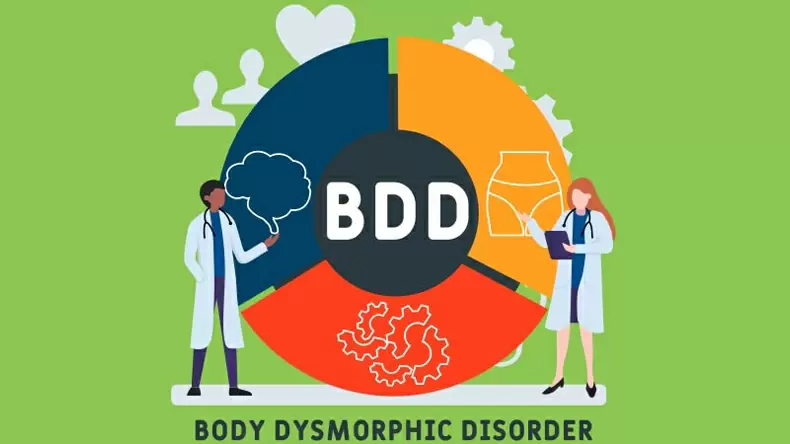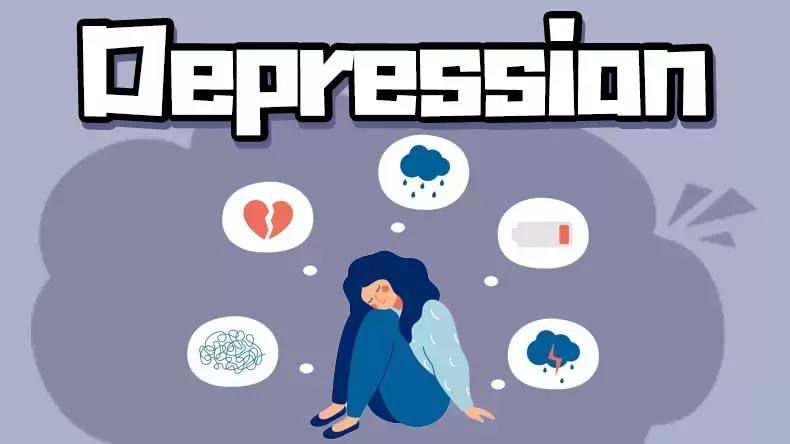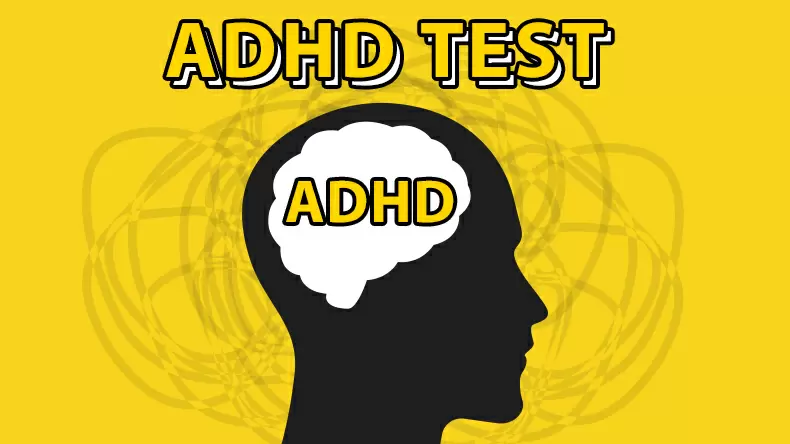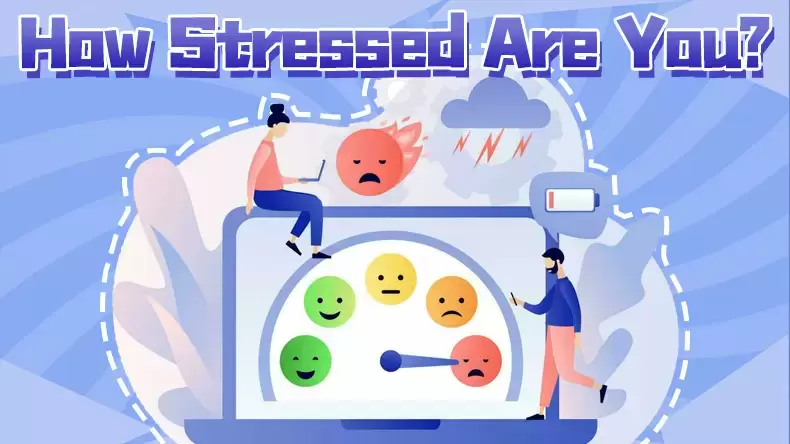Which LE SSERAFIM Member Are You? Quiz
Welcome to the Body Dysmorphia Test! Are you ready to find out if you have BDD? Let's get started and find out if you have BDD! Good luck!
Get ready to answer some questions about your perception of your own bod. Thisbody dysmorphia test is designed to help you understand more about body dysmorphic disorder and whether you might be experiencing symptoms. Let's see if you've got BDD! 
Body Dysmorphia: A Guide to Understanding and Treating a Common Mental Health Disorder
Body Dysmorphia is a mental health disorder that affects millions of people worldwide. It is a condition where an individual becomes obsessed with their physical appearance and perceives themselves as flawed or defective, even when there is no visible defect. This condition can cause significant distress and interfere with daily life, leading to severe anxiety, depression, and other mental health issues.
Body Dysmorphia is often referred to as Body Dysmorphic Disorder (BDD), which is a subtype of Obsessive-Compulsive Disorder (OCD). It is a chronic condition that can begin in childhood or adolescence and can persist into adulthood if left untreated. The prevalence of BDD is estimated to be around 1-2% of the general population, with slightly higher rates among women than men. 
Symptoms of Body Dysmorphia:
The symptoms of Body Dysmorphia can vary from person to person, but they typically involve a preoccupation with one or more perceived flaws in appearance. These flaws may be real or imagined, and they can affect any part of the body. The most common areas of concern include the skin, hair, nose, eyes, and weight.
People with BDD may spend hours each day checking and scrutinizing their appearance in mirrors or other reflective surfaces. They may also avoid social situations or activities that require them to be seen by others. They may feel ashamed or embarrassed about their appearance and may go to great lengths to conceal their perceived flaws. 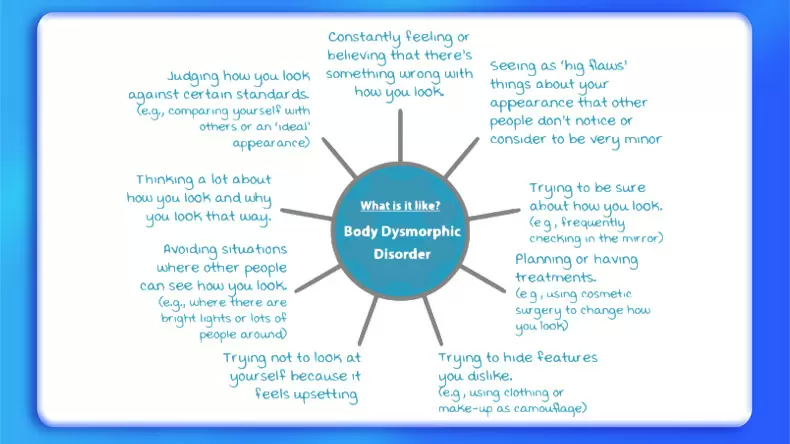
In severe cases, people with BDD may resort to cosmetic procedures or surgeries to try to correct their perceived flaws. However, these interventions rarely provide the relief that they seek, and they may even exacerbate their symptoms.
Causes of Body Dysmorphia:
The exact cause of Body Dysmorphia is not known, but it is believed to be a combination of genetic, environmental, and psychological factors. Some studies have suggested that people with BDD may have abnormalities in the brain regions that are responsible for processing visual information. 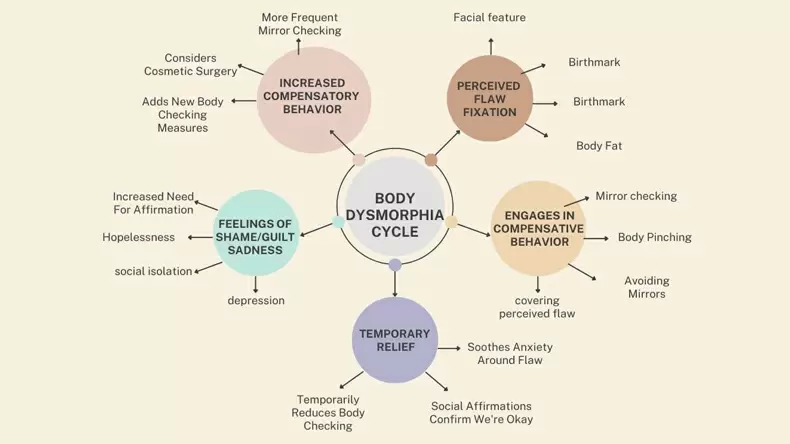
Other factors that may contribute to the development of BDD include childhood trauma, low self-esteem, and cultural pressures to conform to certain beauty standards. People with BDD may also have a history of other mental health disorders, such as anxiety or depression.
Treatment for Body Dysmorphia:
Treatment for Body Dysmorphia typically involves a combination of psychotherapy and medication. Cognitive-behavioral therapy (CBT) is the most effective form of psychotherapy for BDD. It involves working with a therapist to identify and challenge negative thoughts and beliefs about one's appearance.
Medications such as selective serotonin reuptake inhibitors (SSRIs) may also be prescribed to help alleviate symptoms of anxiety and depression. In some cases, people with BDD may benefit from group therapy or support groups, where they can connect with others who are going through similar experiences. 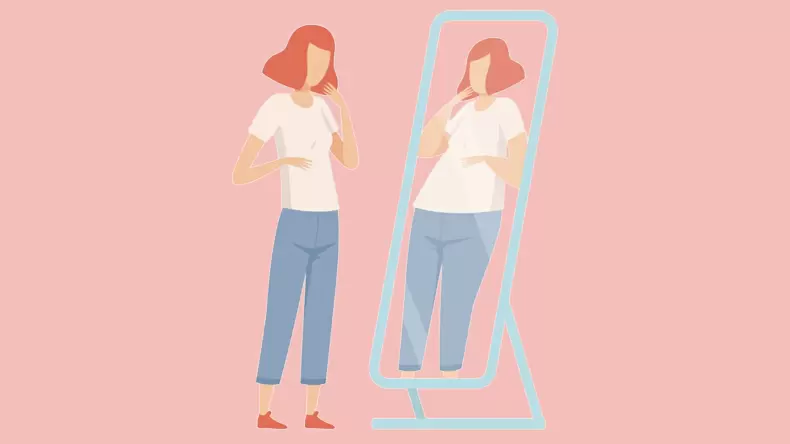
Body Dysmorphia is a complex and challenging mental health disorder that can have a significant impact on a person's quality of life. It is important to recognize the signs and symptoms of BDD and seek professional help if you or someone you know is struggling with this condition. With the right treatment and support, it is possible to manage the symptoms of BDD and improve overall mental health and well-being.
Are you ready to take the Body Dysmorphia Test to find out if you might have BDD? So, let's get started and find out if you have BDD! Good luck!

